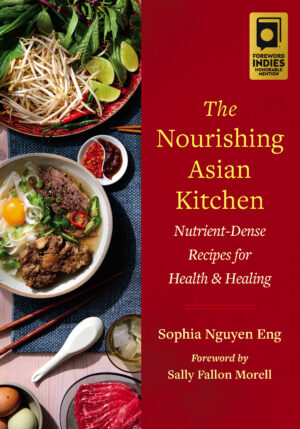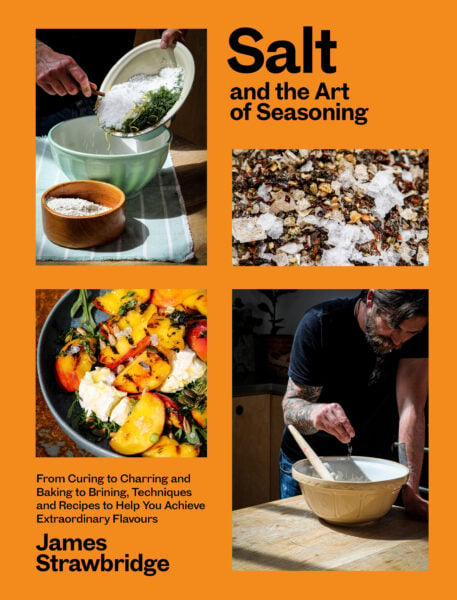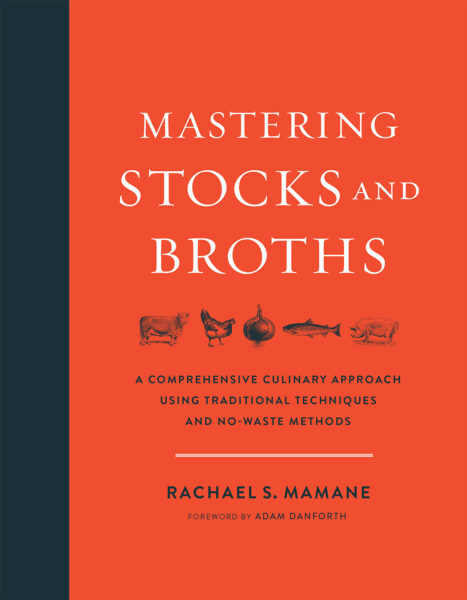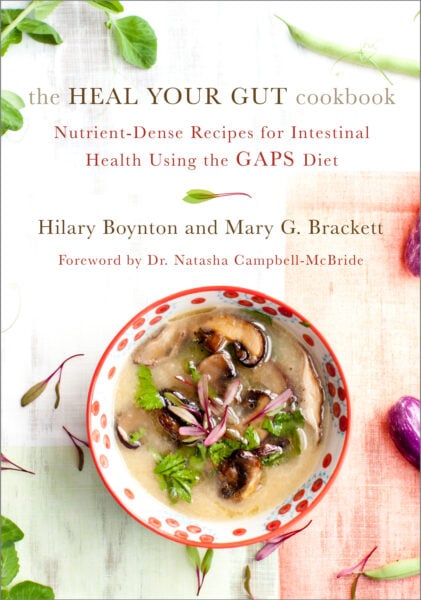Cooking With Nutrient-Dense Fats: How to Make Ghee
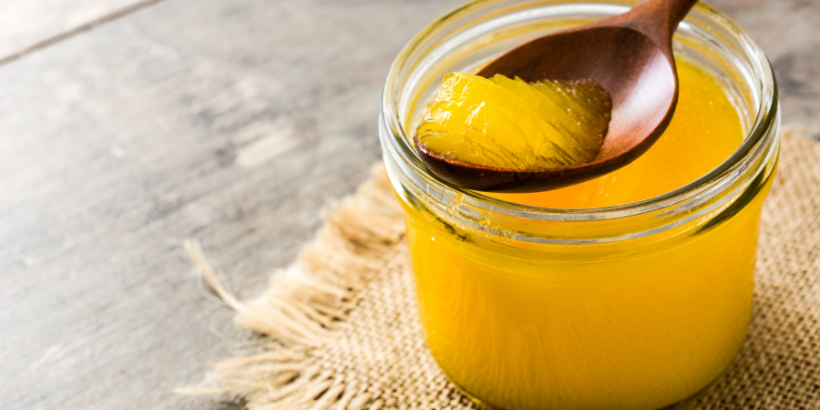
Get your ghee on! With this quick guide, you’ll learn how to make ghee and use it as an ingredient in delicious recipes (like the Citrus-Glazed Chicken one below) in no time.
The following is an excerpt from The Nourishing Asian Kitchen by Sophia Nguyen Eng. It has been adapted for the web.
Cooking With Fats & Oils
As much as possible, avoid refined seed oils and man-made fats.
Seed oils are typically highly processed and high in omega-6 fatty acids, which canlead to an imbalance in the omega-3 to omega-6 ratio in the body when consumed in excess. This imbalance has been linked to inflammation and other health issues.
Some examples of refined seed oils to avoid include soybean oil, corn oil, cottonseed oil, canola oil, sunflower oil, safflower oil, and vegetable oil. These oils are commonly used in processed foods, fried foods, and many commercial cooking and baking applications.
Changing the Oils We Use
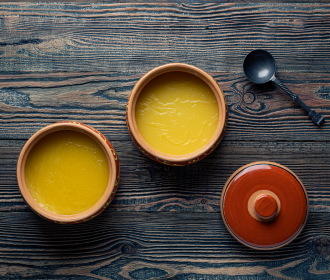 Changing the oils in our diet was tough for my family, who used to love snacking on chips. Next time you go to the grocery store, try to find a snack that isn’t made with seed oils.
Changing the oils in our diet was tough for my family, who used to love snacking on chips. Next time you go to the grocery store, try to find a snack that isn’t made with seed oils.
It may be difficult to find, but there are more and more alternatives being introduced that use healthier oils such as avocado or coconut.
Instead of seed oils, we now cook with the traditional fats and oils that have been used for centuries, using organic, unrefined coconut oil; organic, extra-virgin, and cold-pressed sesame oil and olive oil; and pasture-raised, grass-fed, organic sources of ghee (clarified butter), lard (from pastured pigs), and tallow (rendered beef or lamb fat).
These traditional fats are more stable at high temperatures and have a healthier balance of saturated, monounsaturated, and polyunsaturated fats.
Traditional Fats & Oils
I know that advocating for the health benefits of traditional fats and oils may seem counterintuitive; to a degree, it is even for me. Growing up, I was taught that eating butter and animal fat leads to high cholesterol and heart disease.
As it turns out, the margarine, vegetable oils, and other seed oils that were once advertised as healthier options are, in fact, extremely unhealthy. These products are highly processed, present numerous health hazards, and should be avoided.
You are much better off with butter and animal fats. As with all food, it’s important to source your fats well, such as from organic, pastured, or grass-fed animals. It’s also good practice to vary the types of fats and oils you use.
Ghee: What Is It?
Ghee is a type of clarified butter that has been used in Indian cuisine for thousands of years. It is made by simmering butter, which causes the water and milk solids to separate from the fat. The milk solids are then removed, leaving behind a pure form of butterfat.
Ghee has a rich, nutty flavor and a high smoke point, making it a popular choice for cooking and frying. It also has a long shelf life and is high in healthy fats like CLA and butyrate.
Depending on the water content of the butter you use to make ghee and how long you simmer it, you can expect a yield of 25 to 30 percent less ghee than the amount of butter you started with.
How to Make Ghee
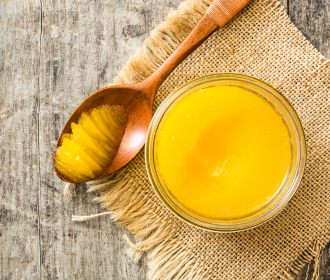 Start with high-quality unsalted butter. Grass-fed butter is often preferred for its richer flavor and higher nutrient content.
Start with high-quality unsalted butter. Grass-fed butter is often preferred for its richer flavor and higher nutrient content.
Cut the butter into cubes and put them in a heavy-bottomed saucepan. Heat over low heat, stirring occasionally, until the butter melts completely.
Cook at a low simmer, allowing the water to evaporate and the butter start to foam. You will notice a layer of milk solids forming at the bottom of the pot
Keep simmering until the foam disappears and the milk solids turn golden brown. Remove the pan from the heat and let it cool for a few minutes.
Straining & Storing Ghee
Strain the liquid through a cheesecloth or fine-mesh sieve to remove the milk solids, leaving behind a clear, golden liquid—that is the ghee.
Store the ghee in the pantry in a clean, sterile glass jar with the lid on tight. Freshest within the first 3 months, ghee is shelf stable for up to 12 months when stored properly.
RECIPE: Citrus Glazed Chicken
Yield: 4 to 6 servings
Tim’s grandfather was a Chinese immigrant who served in World War II and later became a chef at Chinese restaurants in Oklahoma and Illinois. Growing up, Tim heard many stories about his grandfather’s cooking and how he brought the flavors of China to the Midwest.
Today, Tim honors his grandfather’s legacy by creating healthier and more nutrient-dense versions of Chinese dishes.
This mandarin orange chicken is a perfect combination of savory and sweet, making it a delicious twist on the heavily processed and MSG-laden versions found in many takeout restaurants.
Instead of deep-frying the chicken in vegetable oil, we pan-fry the chicken in traditional fats that are rich in nutrients. The orange zest infuses the dish with a bright, fresh citrus flavor, and the fresh broccoli adds a nice crunch.
The cilantro is optional, but it adds a nice pop of color and fresh herbal flavor.
Ingredients
- 1 tablespoon arrowroot starch
- 1/2 teaspoon fine sea salt
- 1/4 teaspoon ground black pepper
- 1/4 teaspoon ground ginger
- 1/4 teaspoon garlic powder
- 1/4 teaspoon onion powder
- 1/4 cup (60 mL) mandarin orange or clementine juice
- 1 tablespoon maple syrup
- 1 tablespoon tamari or soy sauce
- 1 tablespoon coconut oil or ghee
- 1 pound (450 g) boneless, skinless pasture-raised chicken thighs, cut into bite-size pieces
- 1 teaspoon grated mandarin orange or clementine zest
- 1 broccoli crown, cut into 1- to 2-inch (2.5–5 cm) pieces
- Steamed rice (pages 62–63), for serving
- Chopped fresh cilantro, for garnish (optional)
Process
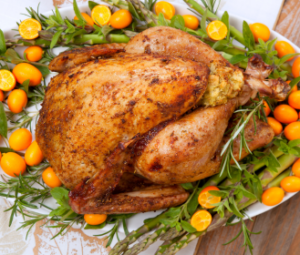 In a small bowl, whisk together the arrowroot, salt, pepper, ginger, garlic powder, and onion powder; set aside.
In a small bowl, whisk together the arrowroot, salt, pepper, ginger, garlic powder, and onion powder; set aside.
In another small bowl, whisk together the orange juice, maple syrup, and tamari; set aside.
Heat the oil in a large skillet or wok over medium-high heat. Add the chicken and cook for 5 to 7 min- utes, stirring occasionally, until it is lightly browned on all sides and cooked through.
Sprinkle the arrowroot mixture over the chicken and stir to coat the chicken evenly. Add the orange juice mixture and bring to a boil, then reduce the heat and simmer for 2 to 3 minutes, until the sauce has thickened.
Stir in the orange zest and broccoli and cook for 2 to 3 minutes, until the broccoli is crisp-tender.
Serve over rice, sprinkled with cilantro, if desired.
Recommended Reads
Recent Articles
Chances are, you’ve seen cattails growing on the edge of your local lake or stream at least once or twice. Instead of just passing these plants, try foraging for and cooking them to create delicious seasonal dishes! The following excerpt is from The New Wildcrafted Cuisine by Pascal Baudar. It has been adapted for the…
Read MoreGarlic mustard: while known as “invasive,” this plant can be consumed in its entirety and has great nutritional value. Plus, the garlic-flavor is a perfect addition to any recipe that calls for mustard! The following are excerpts from Beyond the War on Invasive Species by Tao Orion and The Wild Wisdom of Weeds by Katrina…
Read MoreOh, honeysuckle…how we love thee. If only there was a way to capture the sweet essence of this plant so we could enjoy it more than just in passing. Luckily, foraging and some preparation can help make that happen! Here’s a springtime recipe that tastes exactly like honeysuckle smells. The following excerpt is from Forage,…
Read MoreIntroducing…your new favorite brunch dish! This whole broccoli frittata is packed with fresh, wildcrafted flavors that are bound to help you start your day off on the right foot. The following is an excerpt from The Forager Chef’s Book of Flora by Alan Bergo. It has been adapted for the web. RECIPE: Whole Broccoli Frittata…
Read MoreWondering where to forage for greens this spring? Look no further than hedges, which serve as natural havens for wild greens and herbs! The following is an excerpt from Hedgelands by Christopher Hart. It has been adapted for the web. Food from Hedges: Salads and Greens Let’s start by looking at all the wild foods…
Read More

